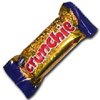The ship was only scuttled 4 weeks ago and we were amongst the first members of the public to be allowed to dive her on Wednesday 11th May, 2011.
We left Terrigal at 8am which meant I left home at 5am. With hindsight this was probably 30 mins too early given that I was on the Central Coast by 6:40am. It was a perfect morning although it was a little chilly but once the wetsuit was on that was quickly forgotten.
Here is my video of the first dive to some nice music.
HMAS ADELAIDE (FFG-01) was a long-range escort frigate with roles including area air defense, anti-submarine warfare, surveillance, reconnaissance, and interdiction. The Ship could simultaneously counter threats from the air, surface and sub-surface.
 |
| HMAS Adelaide in service |
She was scuttled on April 13th 2011 after many years of controversy and court battles by parties with their own interests and agenda claiming to be environmentalists (not so enviro and more mental really!)
TECHNICAL DATA
Displacement 4100 tonnes
Length 138 metres
Beam 13.7 metres
Ships Company 186 (210 with helicopter crews)
Propulsion Two General Electric LM2500 gas turbines driving a single controllable pitch propeller
Speed 30+ knots
Weapon Systems 76mm rapid fire gun. Harpoon anti-ship missiles. Standard surface to air missiles.
Vulcan Phalanx close in weapons system. Two triple anti-submarine torpedo tubes for Mk 32 torpedoes.
Aircraft Up to two SeaHawk helicopters
Our skipper from Pro-Dive was Bob and he ensured all the necessary paperwork and checks were done before we headed out.
 |
| Bob pictured before the Adelaide was scuttled. |
The visibility was about 5M and the wreck itself is huge. It sits in 30M of water with 2M under the sand, so you can get down to 32M inside the ship but only 30M outside. I imagine the sand line will creep up outside the ship over time.
We started about mid ship and made our way to the starboard bow. At the bow we could see her proud :01: numbers and found a small swim through (apparently through the laundry) and went through to the port side. We then headed up to the upper deck and swam back past the mast and funnel. We could see divers deep inside the wreck from the top of the funnel.
 |
| Me in the Captains chair |
From the Funnel we went to the top of the helicopter deck but did not descend in order to avoid a sawtooth dive pattern. We turned back and found an anemone that has started to grow inside the bucket on top of the helicopter hangar.
We turned back and did a blue water stop for 1 min @ 9M and a safety stop for 3 min @ 5M. We headed back to shore, only a 5 min trip, to get our second tanks and take our 1 hour surface interval before the second dive.
At 10 am we headed back out for our second dive and I took photographs this time. I was using my new Intova 12M pixel camera, new slave flash and new wide angle lens attachment.
Lindsey was my buddy and we planned to enter the ship this time and have a look around.
We swam into the middle of the ship on a mid deck and it was very dark. Lindsey decided not to follow me so I turned back and we swam up to the bridge.The Bridge is still recognizable and the captains chair is still there and will undoubtedly be the source of many photographs.
 |
| information on the bridge |
 |
| The bridge console |
After the bridge we swam back along the top deck and found this little array of plugs and things that will probably become a haven for marine life in the future.
We ascended up the mast this time and the top of the mast is in about 10m. We stopped @ 9M for 1 min and again a safety stop @ 5M for 3min.
On the day it was very business as usual but now I look back these were probably the two best dives i have ever done. The ship is a magnificent dive attraction and will take many dives to become familiar with the layout and will only be enhanced as the marine life moves in.
 |
| The inaugural Abyss dive on the HMAS Adelaide crew |
After the dive i had fish and chips with Keith, Jenny , Brett and Michelle. I went to the top of the nearby lookout and took a picture of the wreck location. It is difficult to see the buoys in this picture but this is where she lays off Avoca Beach.
 |
| The location of the HMAS Adelaide from the surface |
211-212

















































